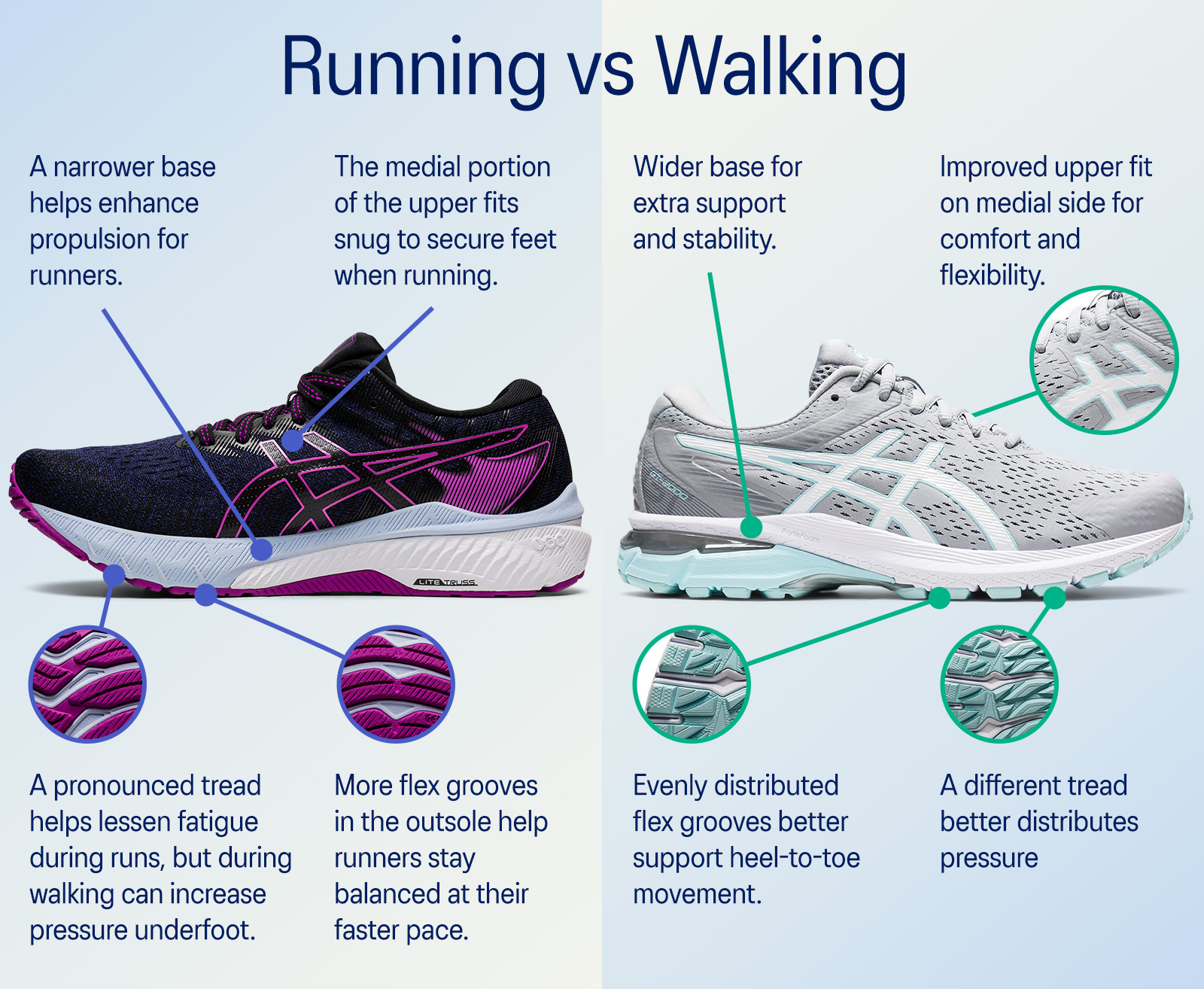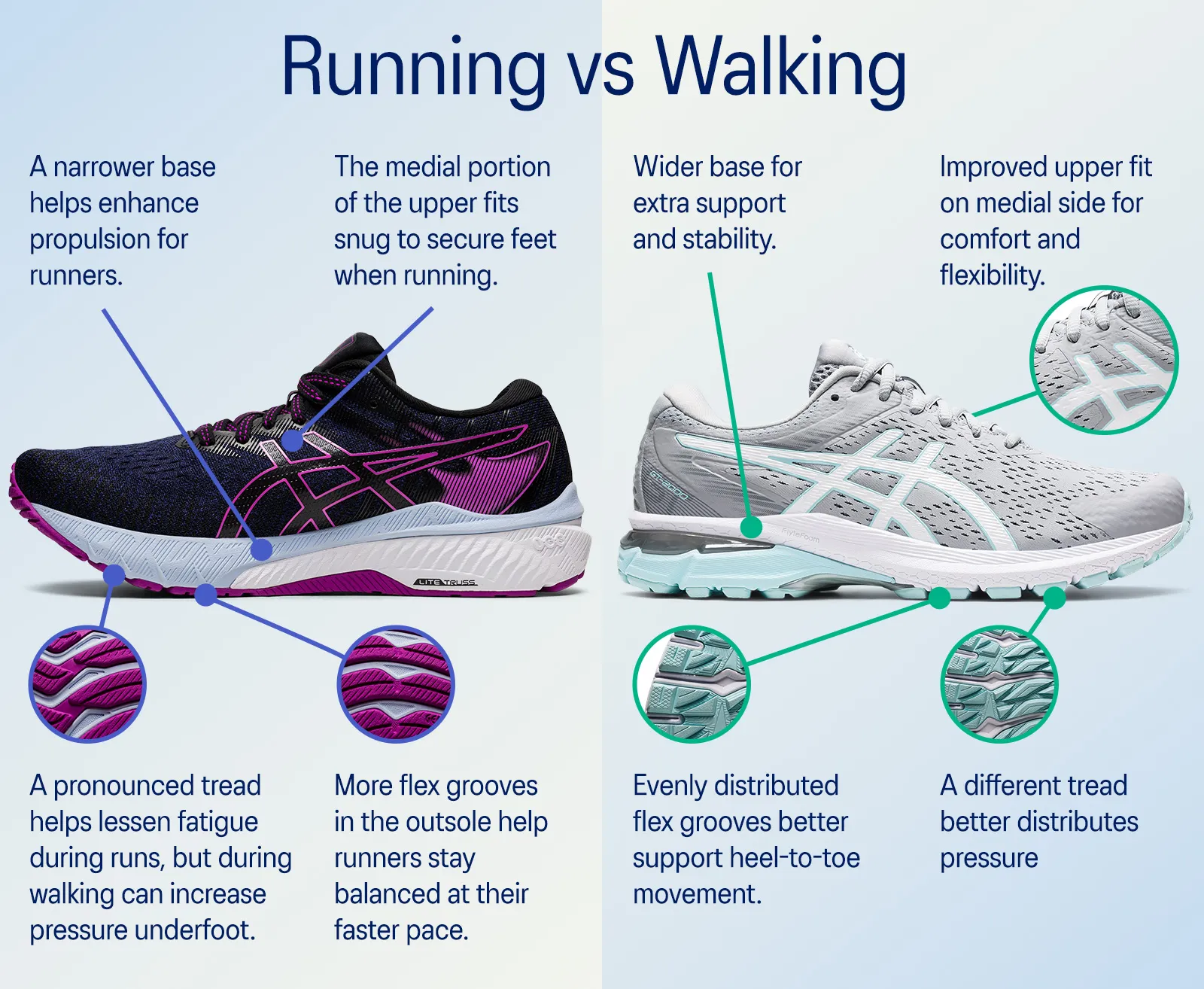Running vs Walking Shoes: Which Is Best for Your Fitness Goals
When you’re gearing up for a fitness routine, the choice between running vs walking shoes can feel like a minor detail, but it’s one that profoundly impacts your performance, comfort, and injury risk. Many people assume that any athletic shoe will do, but the reality is that running and walking involve distinct biomechanics, and the right footwear is tailored to support those movements. In this article, we’ll dive deep into the science behind these shoes, drawing from authoritative sources like biomechanical studies, expert opinions, and real-world applications to help you decide which pair aligns with your fitness aspirations. Whether you’re a casual walker or a dedicated runner, understanding the nuances can elevate your experience and protect your body from unnecessary strain.
The Biomechanical Differences Between Running and Walking
To grasp why running vs walking shoes matter, we must first explore the biomechanics of each activity. Walking is a low-impact motion where one foot always maintains contact with the ground, creating a rolling movement from heel to toe. This heel-strike pattern demands cushioning in the rearfoot to absorb shock, as noted in research from institutions like Harvard Medical School, which emphasizes that proper walking shoes reduce joint stress over time. In contrast, running involves a flight phase where both feet are off the ground, leading to higher impact forces—often two to three times your body weight—upon landing. Runners may strike with the midfoot or forefoot, requiring shoes with enhanced cushioning throughout and flexibility to facilitate a smoother toe-off. Dr. Casey Kerrigan, a renowned biomechanist, has highlighted in interviews that running shoes are engineered to manage these repetitive high loads, whereas walking shoes prioritize stability for a more controlled gait. This fundamental difference means that using the wrong type can lead to discomfort; for instance, walking in rigid running shoes might cause heel pain, while running in flexible walking shoes could increase the risk of shin splints. By aligning your footwear with these biomechanical needs, you’re not just choosing a shoe—you’re investing in a tool that supports your body’s natural movement patterns.

Key Features of Running Shoes
Running shoes are meticulously designed to handle the dynamic stresses of running, and their features reflect this purpose. One of the most critical aspects is cushioning, which is often more generous and responsive than in walking shoes. Brands like ASICS and Nike incorporate technologies such as Gel cushioning or Air units, backed by studies from sports science journals that show how these elements reduce peak impact forces on joints. Another key feature is the heel-to-toe drop, which typically ranges from 8mm to 12mm in running shoes to promote a forward lean and efficient stride. Additionally, running shoes boast lightweight materials and breathable uppers to enhance speed and comfort during intense workouts. The outsole is another differentiator; it usually includes durable rubber with flex grooves that allow for natural foot flexion during push-off. As noted on authoritative platforms like Runner’s World, these shoes often have a wider base for better stability at higher speeds, preventing ankle rolls. Moreover, many running models incorporate motion control or stability features for overpronators, addressing issues highlighted in podiatry literature from sources like the American Podiatric Medical Association. When you slip on a pair of running shoes, you’re equipping yourself with a precision instrument that mitigates the risks of high-impact exercise, making them ideal for activities like jogging, sprinting, or long-distance runs where every step counts toward your fitness goals.

Key Features of Walking Shoes
Walking shoes, on the other hand, are crafted for the steady, grounded nature of walking, emphasizing comfort and support over shock absorption for high impacts. A standout feature is their flexibility, particularly in the forefoot, which allows for a natural heel-to-toe roll without resistance. This is crucial because, as explained in resources like Wikipedia’s entry on footwear, walking involves a more prolonged contact phase with the ground, and stiff shoes can hinder this motion, leading to fatigue. The cushioning in walking shoes is often firmer and more evenly distributed to provide stability, with many models featuring a lower heel-to-toe drop (around 0mm to 6mm) to encourage a more upright posture. Brands such as New Balance and Skechers design walking shoes with arch support and contoured footbeds, drawing from ergonomic principles cited in health websites like WebMD to prevent common issues like plantar fasciitis. The outsoles are generally made of sturdy rubber with less aggressive tread patterns, optimized for varied surfaces without adding unnecessary weight. In terms of durability, walking shoes are built to withstand daily use on pavements or trails, as highlighted in consumer reports from sources like Consumer Affairs. By choosing walking shoes, you’re selecting a companion for everyday fitness that prioritizes joint health and endurance, making them perfect for activities like brisk walking, hiking, or long strolls where consistency trumps speed.

How to Choose Based on Your Fitness Goals
Your fitness objectives should drive the decision in the running vs walking shoes debate, as each type supports different outcomes. If your goal is weight loss or cardiovascular improvement through running, opt for running shoes to handle the intensity; studies from organizations like the American Council on Exercise confirm that proper footwear can enhance performance and reduce injury rates. For low-impact activities like walking for general health, walking shoes offer the support needed for sustained effort. Consider factors like your typical terrain—running shoes excel on tracks or roads, while walking shoes adapt well to urban or light trail environments. It’s also wise to assess your foot type; overpronators might benefit from stability features in running shoes, whereas neutral walkers could prefer the simplicity of standard walking models. Don’t forget to factor in discounts from reputable retailers; for instance, brands often offer seasonal sales on platforms like Amazon or specialized stores, making premium options more accessible. As fitness expert Jillian Michaels once noted in a YouTube video, “Investing in the right shoes isn’t a luxury—it’s a necessity for long-term health.” By aligning your choice with your ambitions, you’ll not only achieve better results but also enjoy the journey with greater comfort and confidence.

Common Misconceptions and Expert Insights
Many misconceptions cloud the running vs walking shoes discussion, such as the belief that they are interchangeable. In reality, using running shoes for walking can lead to instability due to their heightened cushioning, while walking shoes lack the shock absorption needed for running, potentially causing injuries like stress fractures. Experts from Quora and certified podiatrists often debunk these myths, emphasizing that each shoe is optimized for specific gait patterns. For example, a study published in the Journal of Sports Sciences found that runners wearing inappropriate footwear had a 30% higher risk of lower limb injuries. Celebrity trainers on social media platforms like Twitter also advocate for tailored choices; one tweet from a well-known fitness influencer read, “Don’t compromise on shoes—your feet will thank you later.” Additionally, resources from Baidu Baike and academic literature highlight that walking shoes typically have a more rigid shank for arch support, unlike the flexible midsoles in running shoes. By dispelling these myths with evidence, we can make informed decisions that enhance our fitness journeys, ensuring that every step we take is supported by science and expertise.
In the end, the debate over running vs walking shoes boils down to matching your footwear to your movement patterns and goals. Running shoes shine in high-impact scenarios, offering cushioning and flexibility for dynamic strides, while walking shoes provide stability and comfort for steady, low-impact pursuits. By considering the biomechanics, features, and expert advice outlined here, you can select the ideal pair to propel you toward your fitness aspirations. Remember, the right shoes aren’t just an accessory—they’re a foundation for a healthier, more active life.
